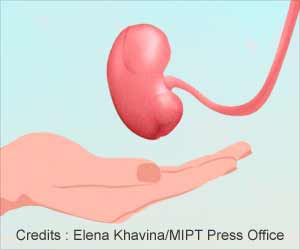New changes to the guidelines will help the doctors serve people with seasonal influenza better.

‘Certain changes to the guidelines such as using newer and highly accurate molecular tests can deliver results in 15-60 minutes instead of rapid-influenza diagnostic tests (RIDTs), which produce quick results but are false negatives in at least 30 percent of outpatients.’





Outpatients who have been diagnosed with the flu and are at high risk for complications should also be provided antiviral treatment as soon as possible, note the seasonal influenza guidelines, which are published in Clinical Infectious Diseases.The guidelines recommend using newer and highly accurate molecular tests that deliver results in 15-60 minutes instead of rapid-influenza diagnostic tests (RIDTs), which produce quick results but can be falsely negative in at least 30 percent of outpatients with influenza.
While antiviral treatment is recommended within two days after the start of flu symptoms in people who aren't at high risk for complications, the guidelines note they should be prescribed to those at high risk even if they have been sick for more than two days.
People who are extremely obese have a body mass index (BMI) of 40 or more. Others in the high-risk category include: young children (especially those younger than 2 years old); women who have recently given birth; those with a weakened immune system due to disease or medication (such as people with HIV or AIDS, cancer, who have had an organ transplant or who are on chronic steroids); people younger than 19 years old who are receiving long-term aspirin therapy; those with chronic medical conditions including asthma, neurological or neurodevelopmental disorders (such as cerebral palsy, epilepsy and stroke), heart or lung disease, kidney, liver or metabolic disorders; and nursing home residents; American Indians and native Alaskans.
"Influenza can be serious, especially for the sizable group of people at high risk," said Timothy M. Uyeki, MD, MPH, MPP, co-chair of the guidelines committee and chief medical officer of the Influenza Division of the National Center for Immunization and Respiratory Diseases at the Centers for Disease Control and Prevention (CDC). "Annual influenza vaccination is the best way to prevent influenza, but it is not 100 percent effective. Those at high risk need to be encouraged to seek medical care right away if they develop influenza symptoms during the influenza season."
Advertisement
The guidelines note antiviral treatment should be started immediately in people at high risk of flu complications who are being admitted to the hospital with suspected influenza, without waiting for the results of molecular influenza testing. Influenza testing is important because physicians are more likely to treat patients with antiviral medications if they have a definitive diagnosis, further reducing the likelihood of prescribing antibiotics inappropriately, especially in outpatients.
Advertisement
"High-risk individuals who are hospitalized with flu complications are at an increased risk for serious bacterial infections, and infectious diseases physicians' expertise is critical to ensuring they receive the best care," said Andrew T. Pavia, MD, FIDSA co-chair of the guidelines committee and chief of the Division of Pediatric Infectious Diseases at the University of Utah, Salt Lake City. "ID doctors also can provide guidance when a patient who has the flu is not responding to antiviral treatment or is getting worse."
The previous guidelines were published just before the 2009 H1N1 influenza pandemic, the fourth pandemic in the past 100 years. Other pandemics occurred in 1918 (killing an estimated 675,000 people in the United States), 1957 and 1968. A pandemic is a worldwide outbreak of a new influenza A virus that is very different than seasonal influenza A viruses circulating in people. Once it begins circulating, the pandemic virus becomes a seasonal flu virus in subsequent years. Last season the flu was responsible for an estimated 49 million illnesses in the United States, including 960,000 hospitalizations and 79,000 deaths.
"We are always concerned about preparing for the next pandemic, but we also are focused on preventing and controlling seasonal influenza," said Dr. Uyeki. "While pandemics aren't predictable, we know that every year we're going to have seasonal influenza and we need to improve how we prevent and control it through influenza vaccination, better diagnosis and early antiviral treatment of patients."
Source-Eurekalert














